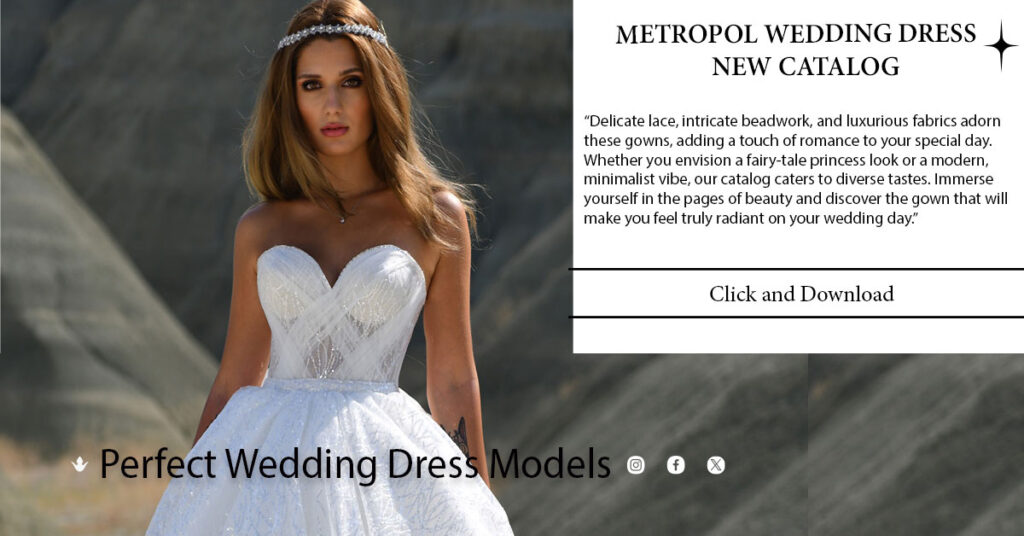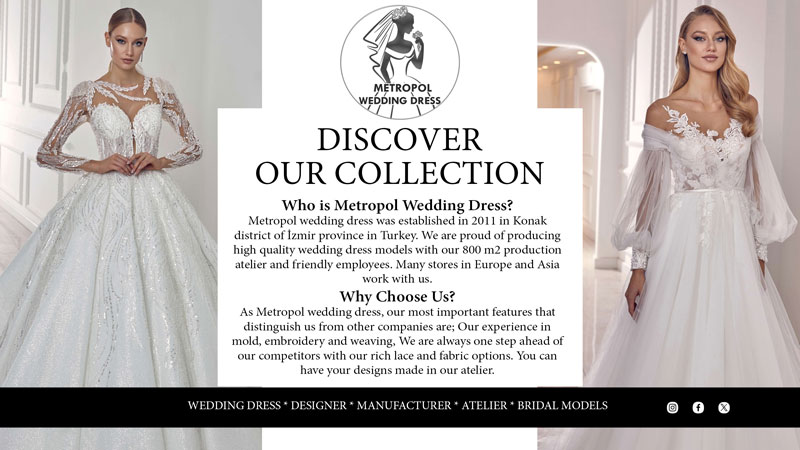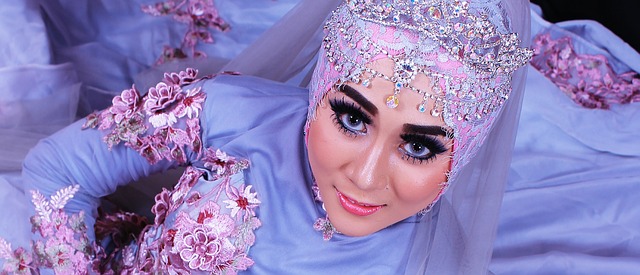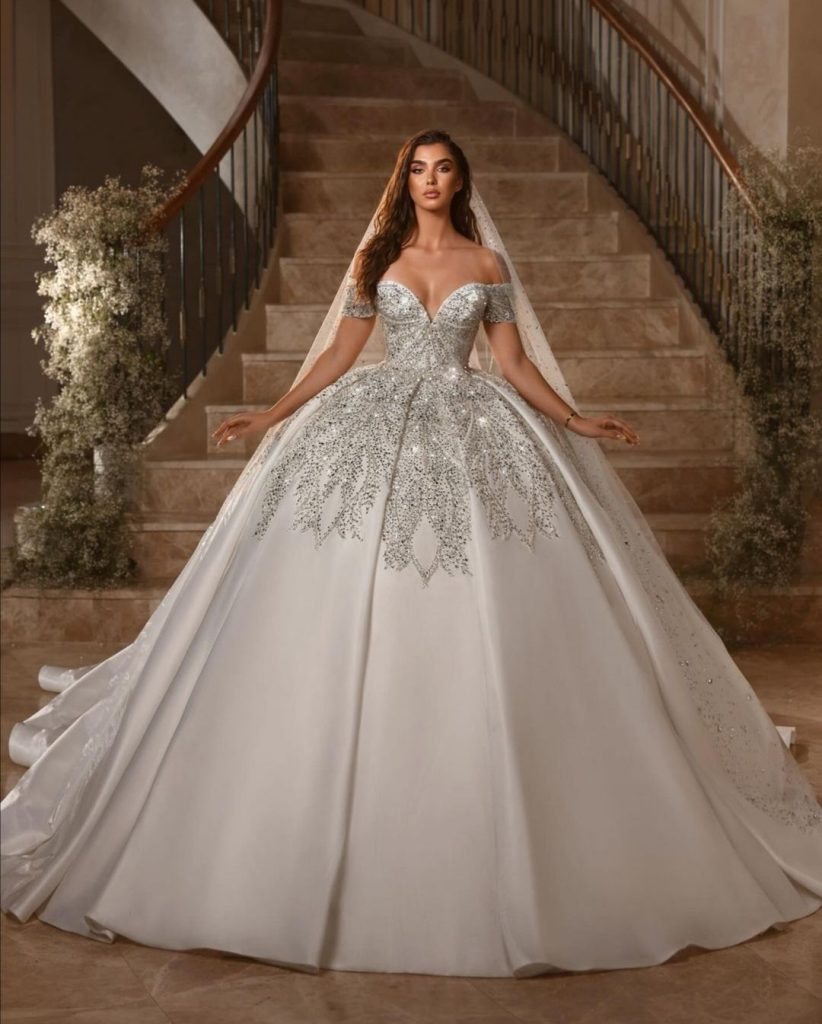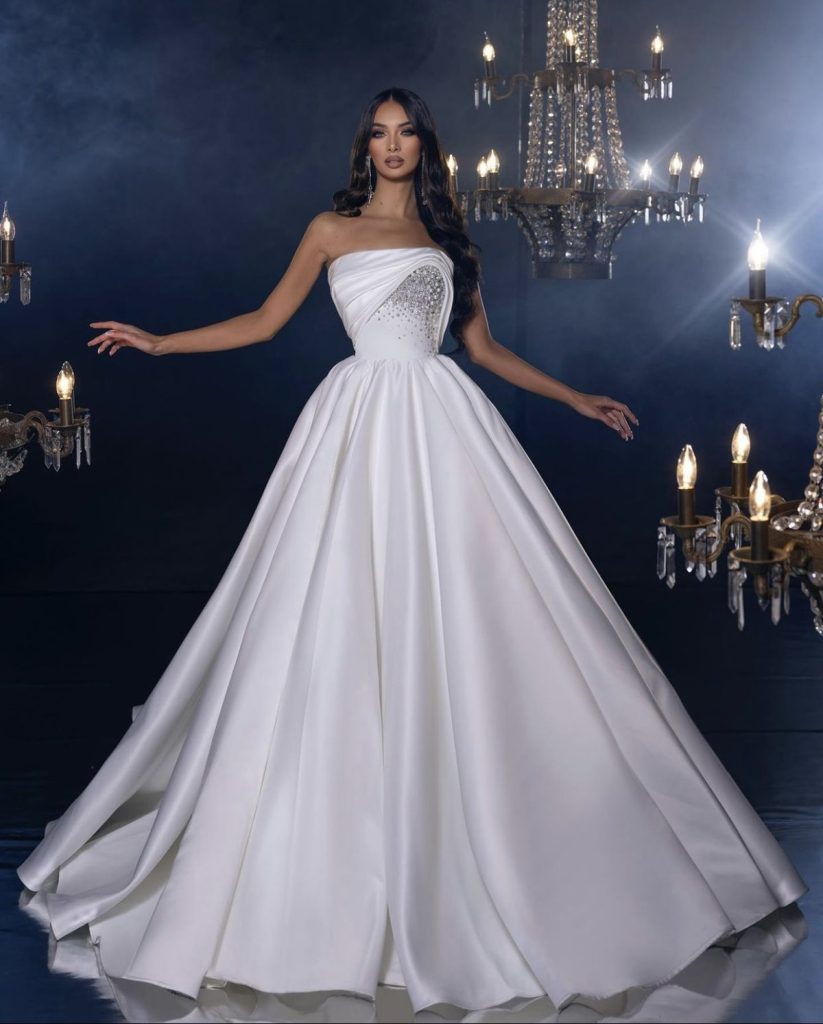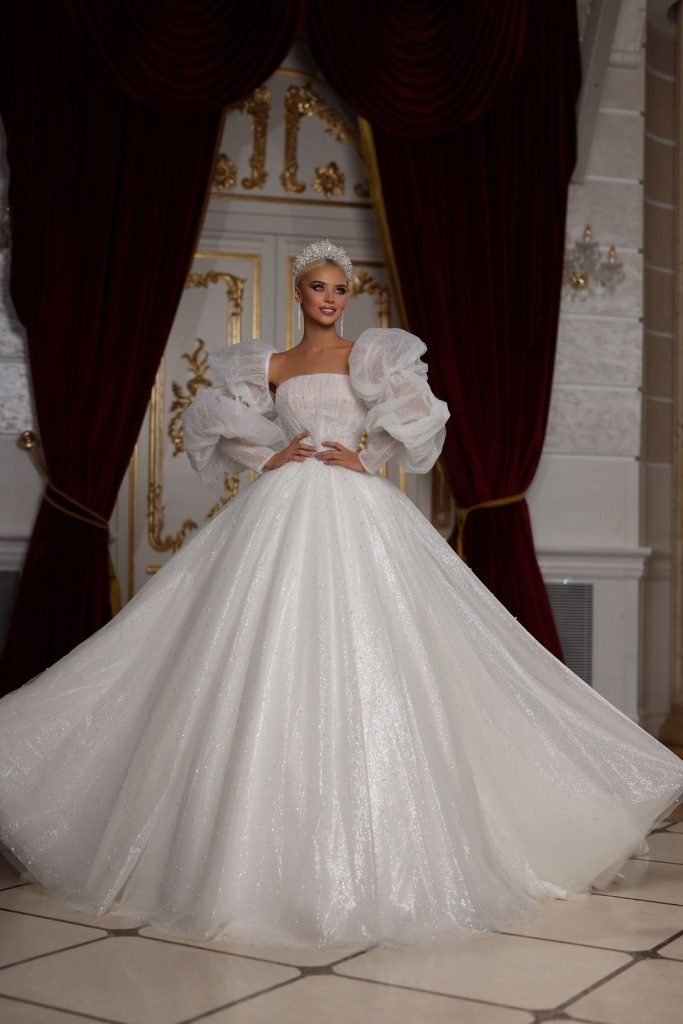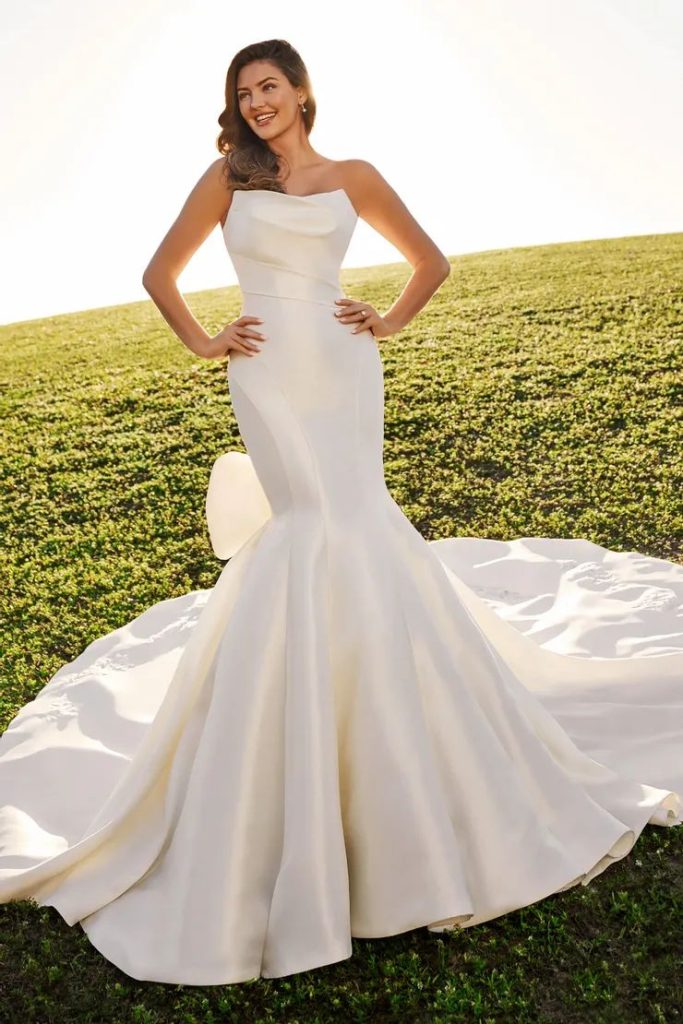
Wholesale Custom Made Dresses In the ever-evolving world of fashion, wholesale custom made dresses have emerged as a game-changer for retailers, designers, and entrepreneurs alike. Whether you’re stocking a boutique, launching an online store, or catering to special events, opting for wholesale custom made dresses allows you to offer unique, personalized apparel that stands out in a crowded market. This comprehensive guide delves deep into everything you need to know about wholesale custom made dresses, from their history and benefits to sourcing strategies, design trends, and beyond. If you’re searching for ways to elevate your fashion business with high-quality, tailored garments at bulk prices, you’ve come to the right place.
What Are Wholesale Custom Made Dresses?
At its core, wholesale custom made dresses refer to garments that are designed and produced according to specific customer requirements, but purchased in large quantities at discounted rates. Unlike off-the-rack clothing, these dresses are crafted with individual preferences in mind—think custom fabrics, sizes, colors, and styles—while benefiting from economies of scale through wholesale purchasing.
Wholesale custom made dresses bridge the gap between mass production and bespoke tailoring. Manufacturers or suppliers create these dresses based on buyer specifications, ensuring each piece aligns with brand aesthetics or client needs. For instance, a retailer might order 500 units of evening gowns with embroidered details, all in varying sizes to fit diverse body types. This approach not only reduces costs but also minimizes waste, as production is demand-driven.
The History of Custom Made Dresses in Wholesale Fashion
To truly appreciate wholesale custom made dresses, it’s essential to trace their roots. Custom dressmaking dates back centuries, originating in ancient civilizations where royalty and elites commissioned tailors for exclusive garments. In medieval Europe, guilds of seamstresses specialized in made-to-measure clothing, using luxurious silks and velvets sourced from trade routes.
The industrial revolution in the 19th century shifted paradigms, introducing ready-to-wear clothing. However, custom made dresses persisted among the affluent. By the mid-20th century, with the rise of haute couture houses like Dior and Chanel, bespoke fashion became synonymous with luxury. Wholesale elements entered the scene post-World War II, as global trade boomed and manufacturers in Asia began offering bulk custom services to Western markets.
Today, wholesale custom made dresses have democratized fashion. Advances in technology, such as computer-aided design (CAD) and 3D printing, allow for rapid prototyping and mass customization. Factories in countries like China, India, and Vietnam dominate the market, producing everything from bridal gowns to casual sundresses at wholesale prices. This evolution has made high-end tailoring accessible, fueling the growth of fast fashion brands that incorporate custom elements.
Historically, key milestones include the 1980s surge in prom and wedding dress customization, driven by celebrity influences. The 2000s saw e-commerce platforms like Alibaba facilitating wholesale custom orders, connecting buyers directly with factories. In 2023, the global custom apparel market was valued at over $500 billion, with wholesale custom made dresses accounting for a significant share, projected to grow at 7% CAGR through 2030.
Benefits of Choosing Wholesale Custom Made Dresses for Your Business
Investing in wholesale custom made dresses offers myriad advantages over standard wholesale apparel. First and foremost, customization fosters brand loyalty. Customers today crave personalization—think monogrammed hems or adjustable fits—which wholesale custom options deliver without the premium price tag of individual tailoring.
Cost efficiency is another major perk. Buying in bulk reduces per-unit costs, often by 30-50% compared to retail custom orders. For example, a single custom dress might cost $200, but wholesale lots of 100 could drop to $80 each, including design tweaks. This margin allows retailers to price competitively while maintaining quality.
Sustainability plays a role too. Wholesale custom made dresses are produced on-demand, cutting down on overproduction and inventory waste—a critical factor in an industry responsible for 10% of global carbon emissions. Eco-friendly fabrics like organic cotton or recycled polyester can be specified, appealing to environmentally conscious consumers.
Moreover, flexibility in design iterations is unparalleled. Suppliers often provide samples, allowing buyers to refine prototypes before full production. This iterative process ensures the final product meets market demands, reducing return rates.
How to Source Reliable Suppliers for Wholesale Custom Made Dresses
Finding trustworthy suppliers is crucial for success in wholesale custom made dresses. Start with online marketplaces like Alibaba, Global Sources, or Made-in-China, where verified manufacturers list their services. Use search filters for “custom made dresses wholesale” to narrow options.
Key criteria include minimum order quantities (MOQs)—typically 50-200 pieces for custom work—and lead times, which range from 4-8 weeks. Request samples to assess quality; look for sturdy stitching, vibrant dyes, and durable fabrics.
Certifications matter: Seek suppliers with OEKO-TEX for chemical safety or GOTS for organic materials. Reviews and ratings on platforms provide insights into reliability. For U.S.-based buyers, platforms like Faire or NuORDER connect with domestic wholesalers, though prices may be higher.
Negotiate terms upfront: Discuss payment methods (e.g., T/T, PayPal), shipping (FOB vs. CIF), and return policies. Building relationships through trade shows like Magic Las Vegas or Texworld can lead to better deals.

Popular Styles and Designs in Wholesale Custom Made Dresses
The diversity in wholesale custom made dresses is endless, catering to various occasions and preferences. Bridal dresses top the list, with options for A-line, mermaid, or bohemian styles in lace or satin. Custom elements like detachable trains or illusion necklines add flair.
Evening gowns for galas or red carpets often feature sequins, beading, or velvet, customizable in lengths and colors. Casual sundresses, perfect for summer wholesale lots, can include floral prints, ruffles, or pockets, tailored to size inclusivity.
Prom and cocktail dresses allow for youthful designs, such as high-low hems or off-shoulder cuts. Maternity custom dresses, with adjustable waists and breathable fabrics, address a growing market.
Cultural attire, like saree-inspired dresses or African print maxis, can be wholesaled with custom patterns. Athleisure dresses blending sporty and elegant elements are trending, using moisture-wicking materials.
Materials and Fabrics Used in Wholesale Custom Made Dresses
Fabric choice defines the quality of wholesale custom made dresses. Common options include cotton for breathability, ideal for everyday wear; silk for luxury, offering a smooth drape; and polyester for affordability and wrinkle resistance.
Chiffon and georgette provide flowy elegance for evening dresses, while taffeta adds structure to formal gowns. Eco-fabrics like bamboo or Tencel are rising in popularity for sustainable wholesale lines.
Custom blends, such as cotton-spandex for stretch, enhance comfort. Embellishments like embroidery threads or rhinestones can be specified.
Suppliers often source from textile hubs like Surat in India for prints or Shenzhen in China for synthetics. Quality testing for colorfastness and shrinkage is essential.
In terms of trends, metallic fabrics and velvet are hot for 2025, allowing custom dresses to shimmer uniquely.
The Manufacturing Process for Wholesale Custom Made Dresses
Understanding the production of wholesale custom made dresses demystifies the supply chain. It begins with design consultation: Buyers submit sketches, mood boards, or tech packs detailing measurements and specs.
Pattern making follows, using CAD software for precision. Grading adjusts patterns for different sizes.
Fabric cutting employs laser or manual methods for efficiency. Sewing assembles pieces, with quality checks at each stage.
Embellishments like beading are added manually or via machines. Finishing includes pressing, labeling, and packaging.
For wholesale, batch production ensures consistency. Lead times vary based on complexity—simple dresses take 2-4 weeks, intricate ones up to 8.
Technology like AI-driven fitting apps is revolutionizing custom processes, predicting sizes accurately.
Trends Shaping the Future of Wholesale Custom Made Dresses
2025 trends in wholesale custom made dresses emphasize sustainability, inclusivity, and tech integration. Eco-dyes and upcycled materials are in demand, with brands like Reformation leading the way.
Size inclusivity means custom options for all body types, from petite to plus-size. Gender-neutral designs are gaining traction.
Digital printing allows for bold, custom patterns without minimums. AR try-on apps let customers visualize dresses before ordering wholesale.
Athleisure fusion, with dresses featuring sneakers-friendly hems, appeals to millennials. Vintage revivals, like 1920s flapper styles, are customizable for events.
Global influences, such as K-pop inspired ruffles or Latin American embroidery, diversify wholesale offerings.
Marketing Strategies for Selling Wholesale Custom Made Dresses
Social media campaigns on Instagram and Pinterest showcase custom designs through user-generated content. Influencer partnerships demonstrate versatility.
Pop-up shops or trade fairs allow hands-on experiences. Pricing strategies, such as tiered discounts for larger wholesale orders, encourage bulk buys.
Analytics tools track what custom features sell best, refining future orders.
Case Studies: Success Stories in Wholesale Custom Made Dresses
Consider Brand X, a U.S. retailer that sourced wholesale custom made dresses from Vietnam. By customizing prints to match seasonal trends, they increased sales 40% in one year.
A wedding planner firm ordered bulk custom bridesmaid dresses, reducing costs by 35% while ensuring color coordination.
These examples illustrate how wholesale custom made dresses can transform businesses.
Challenges and Solutions in the Wholesale Custom Made Dresses Industry
Challenges include supply chain disruptions, like those from COVID-19, solved by diversifying suppliers.
Quality control in custom production can be tricky; regular audits and contracts help.
Intellectual property theft is a risk; use NDAs and unique designs.
Rising material costs? Negotiate long-term deals.
For small buyers, high MOQs are barriers; group buying consortia offer solutions.
FAQs About Wholesale Custom Made Dresses
What is the minimum order for wholesale custom made dresses?
Typically 50-100 pieces, varying by supplier.
How long does production take?
4-8 weeks, depending on complexity.
Can I get samples?
Yes, most suppliers offer paid samples.
Are there eco-friendly options?
Absolutely, with organic and recycled fabrics.
How do I ensure quality?
Request certifications and inspect samples.
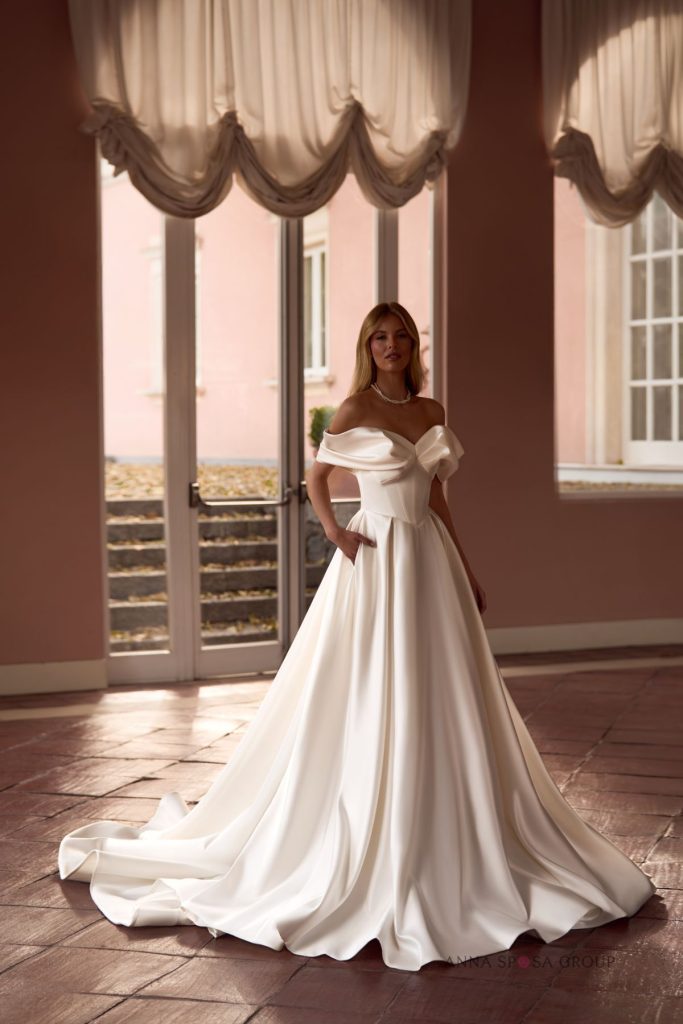
Conclusion: Embracing Wholesale Custom Made Dresses for Fashion Success
In summary, wholesale custom made dresses represent the pinnacle of affordable, personalized fashion. By leveraging customization, businesses can stand out, satisfy customers, and grow profitably. Whether you’re a startup or established brand, exploring this niche promises rewarding opportunities.
The Ultimate Guide to Wholesale Custom Made Dresses for Boutiques: Sourcing, Design, and Success
1. Understanding Wholesale Custom Made Dresses for Boutiques
1.1 What Are Custom Made Dresses for Boutiques?
Custom made dresses for boutiques refer to garments designed and produced to meet the specific needs of boutique retailers, typically in bulk quantities to benefit from wholesale pricing. Unlike mass-produced clothing, these dresses are tailored to reflect a boutique’s unique brand identity, customer preferences, or market trends. Customization can include fabric choices, colors, sizes, embellishments, or even exclusive designs that align with a boutique’s aesthetic.
For example, a boutique specializing in bohemian fashion might order 200 custom maxi dresses with floral embroidery, while another focusing on formal wear could request 100 evening gowns with sequined bodices. These dresses are produced by custom dress manufacturers who work closely with retailers to bring their vision to life, ensuring the final product stands out in a crowded retail landscape.
1.2 Why Boutiques Choose Custom Made Dresses
Boutiques thrive on exclusivity, and wholesale custom made dresses allow them to offer products unavailable in chain stores. Here’s why boutiques are increasingly turning to custom solutions:
- Brand Differentiation: Custom dresses create a signature look, setting boutiques apart from competitors like Zara or H&M. For instance, a boutique can offer exclusive lace dresses that reflect local cultural influences, attracting loyal customers.
- Customer Satisfaction: Tailored sizing and designs cater to diverse body types and preferences, reducing returns. A 2024 survey by Fashion Retail Insights found that 68% of boutique customers prefer personalized clothing options.
- Profit Margins: Buying in bulk from custom dress manufacturers reduces per-unit costs by 30-50% compared to retail bespoke orders. A single custom dress might retail for $150, but wholesale orders of 100 units could cost $60 each, boosting margins.
- Sustainability: On-demand production minimizes overstock and waste, aligning with the growing demand for eco-friendly fashion. Boutiques can specify sustainable fabrics like organic cotton or recycled polyester.
- Trend Responsiveness: Custom orders allow boutiques to quickly adapt to trends, such as 2025’s metallic fabrics or asymmetrical hems, without committing to generic inventory.
1.3 The Evolution of Custom Made Dresses in Boutique Retail
The concept of custom dressmaking has ancient roots, with tailors crafting bespoke garments for royalty in Mesopotamia and medieval Europe. By the 19th century, the industrial revolution introduced ready-to-wear clothing, but custom dresses remained a staple for elites. The 20th century saw haute couture houses like Givenchy dominate bespoke fashion, while the 1980s marked a surge in custom prom and bridal dresses, driven by pop culture.
The rise of e-commerce in the 2000s revolutionized wholesale custom made dresses for boutiques. Platforms like Alibaba connected boutiques with custom dress manufacturers in Asia, offering low-cost, high-quality production. By 2023, the global custom apparel market was valued at $520 billion, with boutique-specific custom dresses growing at a 7.5% CAGR, according to Statista. Technologies like 3D printing and AI-driven design tools have further streamlined customization, making it accessible for small businesses.
2. Finding the Right Boutique Dress Supplier
2.1 What Defines a Reliable Boutique Dress Supplier?
A boutique dress supplier specializes in providing tailored apparel solutions for small retail businesses. Unlike generic wholesalers, these suppliers focus on customization, flexibility, and quality to meet boutique demands. Key characteristics include:
- Low MOQs: Many suppliers offer minimum order quantities (MOQs) as low as 50-100 pieces, ideal for boutiques with limited storage.
- Customization Options: Suppliers should provide design flexibility, from fabric selection to embellishments like beading or embroidery.
- Quality Assurance: Certifications like OEKO-TEX (chemical safety) or GOTS (organic textiles) ensure high standards.
- Fast Turnaround: Lead times of 4-8 weeks are standard, with expedited options for urgent orders.
- Private Labeling: Many suppliers offer branding services, allowing boutiques to attach their logos or tags.
2.2 Top Platforms to Source Boutique Dress Suppliers
Finding the right boutique dress supplier requires research. Here are the top platforms and strategies:
- Alibaba: A global leader, Alibaba lists thousands of verified custom dress manufacturers. Use filters for “boutique dresses wholesale” and check supplier ratings. Request samples to assess quality.
- Global Sources: Focuses on vetted suppliers, ideal for sourcing high-end custom dresses. Look for manufacturers with experience in boutique-specific orders.
- Faire: A U.S.-based platform connecting boutiques with domestic and international suppliers. It’s pricier but offers curated options for handmade boutique dresses.
- Made-in-China: Similar to Alibaba, this platform emphasizes Asian manufacturers with competitive pricing for wholesale custom dresses.
- Trade Shows: Events like Magic Las Vegas or Texworld Paris allow boutiques to meet suppliers in person, fostering trust and better deals.
2.3 Tips for Evaluating Boutique Dress Suppliers
- Request Samples: Always order a sample dress to check stitching, fabric quality, and fit. Samples typically cost $50-$150 but prevent costly errors.
- Verify Certifications: Ensure suppliers meet industry standards for safety and sustainability.
- Check Reviews: Platforms like Alibaba display buyer feedback. Cross-check with Google Reviews or industry forums.
- Negotiate Terms: Discuss MOQs, payment methods (e.g., PayPal, T/T), and shipping (FOB vs. CIF). Clarify return policies for defective items.
- Avoid Scams: Use Google Reverse Image Search to verify product photos. Avoid suppliers with no physical address or poor communication.
2.4 Building Long-Term Relationships with Suppliers
Long-term partnerships with boutique dress suppliers yield better pricing, priority production, and exclusive designs. Attend trade shows to meet suppliers face-to-face, or use platforms like WhatsApp for ongoing communication. Regular orders and prompt payments build trust, often unlocking discounts or custom perks like branded packaging.
3. Exploring Private Label Custom Dresses
3.1 What Are Private Label Custom Dresses?
Private label custom dresses are garments produced by a manufacturer but branded and sold under a boutique’s name. This approach allows boutiques to create a unique identity without investing in in-house production. For example, a boutique can order 200 custom cocktail dresses from a custom dress manufacturer and sell them as “Luxe Boutique Evening Collection” with custom tags and packaging.
Private labeling is ideal for boutiques aiming to build brand loyalty. Customers perceive the dresses as exclusive, even though they’re produced in bulk. This strategy also supports higher pricing, as branded products often command premiums.
3.2 Benefits of Private Label Custom Dresses
- Brand Identity: Private labeling creates a cohesive brand image, fostering customer loyalty. A 2024 Retail Branding Report noted that 72% of shoppers prefer boutiques with unique branded collections.
- Higher Margins: Branded dresses can be sold at a 20-40% markup compared to unbranded wholesale items.
- Exclusivity: Suppliers can sign exclusivity agreements, ensuring competitors can’t sell identical designs.
- Marketing Flexibility: Boutiques can create stories around their private label dresses, such as “handcrafted by artisans” or “designed in-house,” boosting appeal.
- Scalability: Start with small batches (e.g., 50 dresses) and scale as demand grows, minimizing risk.
3.3 How to Start a Private Label Custom Dress Line
- Define Your Brand: Identify your boutique’s aesthetic—bohemian, minimalist, or formal—and create a mood board for inspiration.
- Choose a Supplier: Select a custom dress manufacturer experienced in private labeling. Check their ability to produce custom tags, labels, and packaging.
- Design the Collection: Work with the supplier to create prototypes. Use CAD tools or sketches to specify details like necklines or hem lengths.
- Test the Market: Launch a small batch (50-100 dresses) and gather customer feedback via social media or in-store sales.
3.4 Challenges in Private Label Custom Dresses
- Higher Initial Costs: Private labeling involves design fees and branding costs, increasing upfront investment.
- MOQ Requirements: Some suppliers demand higher MOQs (100-200 pieces) for private label orders.
- Design Ownership: Ensure suppliers sign NDAs to protect your designs from being replicated.
Solutions include starting with smaller MOQs, using platforms like Faire for low-batch suppliers, and investing in legal agreements for IP protection.
4. The Power of Wholesale Custom Dresses
4.1 Why Wholesale Custom Dresses Are a Game-Changer
Wholesale custom dresses combine the affordability of bulk purchasing with the exclusivity of tailored designs. Boutiques benefit from economies of scale while offering unique products. For instance, ordering 100 custom sundresses at $50 each is far cheaper than sourcing 100 bespoke dresses at $150 each, allowing boutiques to price competitively.
The global wholesale apparel market is projected to reach $1.2 trillion by 2030, with custom dresses driving growth due to consumer demand for personalization. Boutiques can capitalize on this by ordering wholesale custom dresses tailored to their niche, such as eco-friendly fabrics or plus-size options.
4.2 Types of Wholesale Custom Dresses
- Bridal Dresses: Customizable in lace, satin, or tulle, with options for detachable trains or illusion necklines.
- Evening Gowns: Ideal for galas, featuring sequins, velvet, or custom embroidery.
- Casual Dresses: Sundresses or shirt dresses with custom prints, perfect for everyday boutique sales.
- Prom Dresses: High-low or ball gown styles with vibrant colors and embellishments.
- Cultural Dresses: Saree-inspired or African print dresses tailored to specific communities.
4.3 Sourcing Wholesale Custom Dresses
Suppliers for wholesale custom dresses are found on platforms like Alibaba, Global Sources, or NuORDER. Key considerations include:
- MOQs: Typically 50-200 pieces, negotiable for repeat buyers.
- Lead Times: 4-8 weeks, with rush options costing extra.
- Customization Scope: Ensure suppliers offer flexibility in fabrics, sizes, and designs.
- Shipping Costs: Factor in FOB (Free on Board) or CIF (Cost, Insurance, Freight) terms.
4.4 Marketing Wholesale Custom Dresses
- Social Media: Showcase dresses on Instagram Reels with hashtags like #WholesaleCustomDresses.
- Email Campaigns: Send newsletters highlighting new custom collections to your subscriber list.
- Collaborations: Partner with influencers to model your dresses, emphasizing exclusivity.
5. Partnering with a Custom Dress Manufacturer
5.1 Role of a Custom Dress Manufacturer
A custom dress manufacturer is the backbone of boutique dress production, turning design concepts into reality. These manufacturers handle everything from pattern making to final stitching, offering end-to-end solutions for wholesale custom made dresses for boutiques. They often operate in textile hubs like Guangzhou (China), Surat (India), or Ho Chi Minh City (Vietnam).
5.2 How to Choose a Custom Dress Manufacturer
- Experience: Look for manufacturers with a track record in boutique-specific custom dresses. Check their portfolio for similar projects.
- Technology: Manufacturers using CAD software or 3D printing offer precision and faster prototyping.
- Certifications: Prioritize those with OEKO-TEX or ISO 9001 certifications for quality and safety.
- Communication: Ensure they provide clear updates via email or platforms like WeChat.
- Scalability: Choose a manufacturer capable of scaling from 50 to 500 units as your boutique grows.
5.3 The Manufacturing Process
- Design Consultation: Submit tech packs or sketches detailing measurements, fabrics, and embellishments.
- Pattern Making: Manufacturers create digital or physical patterns, graded for multiple sizes.
- Fabric Sourcing: Choose from cotton, silk, chiffon, or eco-friendly options like Tencel.
- Cutting and Sewing: Laser cutting ensures precision, followed by skilled assembly.
- Embellishments: Beading, embroidery, or appliques are added per specifications.
- Quality Control: Inspections verify stitching, fit, and color accuracy.
- Packaging: Dresses are pressed, labeled, and packed for shipping.
5.4 Innovations in Custom Dress Manufacturing
AI-driven fitting apps predict customer sizes, reducing returns. Digital printing allows intricate custom patterns without high MOQs. Blockchain is emerging to track sustainable fabric sourcing, appealing to eco-conscious boutiques.
6. The Appeal of Handmade Boutique Dresses
6.1 What Are Handmade Boutique Dresses?
Handmade boutique dresses are crafted with artisanal techniques, emphasizing craftsmanship over mass production. These dresses often feature hand-stitched details, embroidery, or unique dyeing methods, making them ideal for boutiques targeting premium customers. While wholesale custom dresses may use machines for efficiency, handmade dresses prioritize individuality.
6.2 Benefits of Handmade Boutique Dresses
- Exclusivity: Handmade dresses are one-of-a-kind, appealing to customers seeking unique pieces.
- Craftsmanship: Skilled artisans ensure superior quality, with details like hand-beaded sequins.
- Storytelling: Boutiques can market the artisanal process, connecting emotionally with customers.
- Sustainability: Many handmade dresses use eco-friendly materials or upcycled fabrics.
6.3 Sourcing Handmade Boutique Dresses
- Local Artisans: Partner with local seamstresses or cooperatives for small-batch production.
- Etsy Wholesale: Connects boutiques with artisans offering handmade dresses in bulk.
- Indian Suppliers: Cities like Jaipur specialize in hand-embroidered dresses, available via platforms like IndiaMART.
- Fair Trade Networks: Organizations like Fair Trade Federation link boutiques with ethical artisans.
6.4 Challenges and Solutions
- Higher Costs: Handmade dresses cost 20-30% more than machine-made ones. Solution: Target luxury markets willing to pay premiums.
- Longer Lead Times: Handcrafting takes 6-10 weeks. Solution: Plan orders well in advance.
- Consistency: Artisanal work may vary. Solution: Work with suppliers offering quality control.
7. Trends Shaping Wholesale Custom Made Dresses for Boutiques in 2025
7.1 Sustainability and Eco-Friendly Fabrics
Consumers demand eco-conscious fashion, with 65% preferring sustainable brands (2024 Nielsen Report). Boutiques can order wholesale custom dresses in organic cotton, bamboo, or recycled polyester, reducing environmental impact.
7.2 Size Inclusivity
Custom dresses now cater to all body types, from XS to 5XL. Adjustable designs, like wrap dresses or elastic waists, ensure universal appeal.
7.3 Cultural and Global Influences
Dresses inspired by K-pop, African prints, or Latin American embroidery are trending. Boutiques can customize these for niche markets.
7.4 Technology Integration
AR try-on apps and 3D design tools let customers visualize custom dresses before ordering. Digital printing enables bold, unique patterns.
7.5 Vintage and Retro Revivals
1920s flapper dresses and 1970s bohemian styles are making a comeback, customizable with modern twists like metallic threads.
8.2 Social Media Marketing
- Instagram and TikTok: Post Reels showcasing the design process or customer testimonials. Use hashtags like #BoutiqueCustomDresses.
- Pinterest: Create boards for dress styles, linking back to your e-commerce site.
- Influencer Collaborations: Partner with micro-influencers to model your private label custom dresses.
8.3 Email Marketing
Send newsletters with exclusive previews of new custom collections, offering discounts for first-time buyers.
8.4 Pop-Up Shops and Events
Host pop-up events to showcase handmade boutique dresses, allowing customers to feel the quality and try on designs.
9. Case Studies: Success Stories in Boutique Custom Dresses
9.1 Case Study 1: Boho Chic Boutique
A California-based boutique partnered with an Indian custom dress manufacturer to create a line of bohemian maxi dresses with hand-embroidered details. By marketing them as handmade boutique dresses, they increased sales by 45% in six months, leveraging Instagram campaigns.
9.2 Case Study 2: Eco-Friendly Evening Wear
A UK boutique launched a private label custom dress line using recycled satin. Optimized product pages for “sustainable wholesale custom dresses” boosted their Google ranking, driving 30% more online sales.
9.3 Case Study 3: Bridal Boutique Success
A bridal boutique ordered 100 custom wedding dresses from a boutique dress supplier in Vietnam. By offering private labeling and size inclusivity, they reduced costs by 35% and attracted destination wedding clients.
10. Challenges and Solutions in Boutique Custom Dress Sourcing
- Supply Chain Disruptions: Diversify suppliers across regions to mitigate risks like shipping delays.
- Quality Control: Conduct regular factory audits and request third-party inspections.
- High MOQs: Join buying consortia to meet MOQs without overstocking.
- Design Theft: Use NDAs and unique design elements to protect intellectual property.
- Rising Costs: Negotiate long-term contracts to lock in prices.
11. FAQs About Wholesale Custom Made Dresses for Boutiques
What is the typical MOQ for custom dresses?
50-100 pieces, though some suppliers offer lower MOQs for boutiques.
How long does production take?
4-8 weeks, depending on design complexity and supplier capacity.
Can I get private label custom dresses?
Yes, most custom dress manufacturers offer private labeling with custom tags and packaging.
Are handmade boutique dresses worth the cost?
Yes, they appeal to premium customers willing to pay for exclusivity and craftsmanship.
How do I ensure quality from a boutique dress supplier?
Request samples, check certifications, and review supplier feedback.
12. Conclusion: Building a Boutique Empire with Custom Dresses
Wholesale custom made dresses for boutiques, whether sourced from a boutique dress supplier, produced as private label custom dresses, or crafted as handmade boutique dresses, offer unparalleled opportunities for growth. By partnering with reliable custom dress manufacturers and leveraging trends like sustainability and inclusivity, boutiques can create unique, profitable collections.

